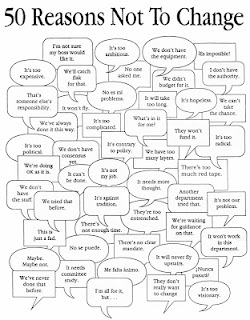A635.8.3.RB
Transformational
Strategies
In this blog, I am asked, “How do I relate and make
sense of the approaches taken by Jim "Mattress Mack" McIngvale and
Stanley McChrystal compared to the information presented in my textbook?” and use
the figures below: “Figure 15.4 Relative Strength of Corporate Cultures” and “Figure
15.5 The Strategy-Culture Matrix in my response.”
Gallery
Furniture was opened in the Houston area in 1981. According to Mattress Mack, sales were great
because of the house building boom. He
goes onto say that over 60,000 houses were being built per year but in 2008 it
slowed down to about 15,000 per year. If
that wasn’t bad enough, in 2009 they experienced a horrific fire that caused
$30,000,000.00 in damages which affected their customer base. To get beyond these problems, business
practices had to change. The culture of
the business had not change since they had opened their doors in 1981. However, cultural change had to occur if they
wanted to remain solvent. In figure 15.4
and 15.5 above and to the side, between 1981 and 2008 Gallery Furniture would have fallen in
the “strong culture” quadrant of 15.4 (Strong/High) and the “reinforce the
culture” quadrant of 15.5 (Low/High). As
the company transformed toward a new culture, it face resistance from some of
the senior employees. In this case, they
were in the “weak culture” of 15.4 (Weak/Low) and the “change the strategy” of
15.5 (Low/Low). However, as Mattress
Mack moved forward by having influencers and coaches who dealt with the
customers (prospecting) and employees, respectively. The company introduced things such as
incentive pay and a wellness program to not only get employee buy in to the
culture changes taking place but also improve the bottom line.
I can
truly relate to Mattress Mack’s approach to his cultural transformation. I have witnessed this type of transformation
while in the Army. Even though there
were the old Soldiers (like the old employees) that resisted, they eventually
either made the transformation, got out or retired.
With
regards to General McChrystal’s TED Talk, I can completely relate. I lived the exact same experiences that he
did. I watched the Army transform right
before my eyes. I watched the old regime
resist change and grasped for understanding as a new generation of Soldiers
came on board. I use to call them the “Nintendo”
generation. Especially toward the end of
my military career. These new Soldiers
were tech savvy, texting, video game playing arguers. They always question why something is being
done. Being a different kind of “old
school”, it really would get under my skin.
Now that I have been retired almost seven year and have seen the actions
and behaviors of the high school Cadets that I teach, the military is going to
need to transform again.
References
McChrystal, S. (2011, Mar). TEDTalk: Listen, learn…then learn. [Video File]. Retrieved from http://www.ted.com/talks/stanley_mcchrystal/transcript?language=en
McIngvale, J. (2012, September 17). Influencer | Gallery Furniture video case.
[Video File]. Retrieved from https://www.youtube.com/watch?v=E20RW75Fhu4
Brown, D.R. (2011). Experiential approach to
organization development. (8th Ed). Upper Saddle River, NJ:
Prentice Hall










